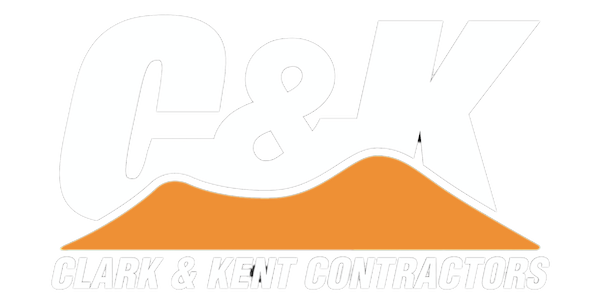Anatomy of a BMX bike frame
The frame is the backbone of any BMX bike, and its manufacture is central to how the bike feels to the user and, more importantly, how it behaves when riding. All BMX bike frames aim to combine the highest strength with the lowest weight. Several factors are at play in achieving this, and the materials and how they are used in bike frame manufacture are crucial to the result.
Choosing a frame is not as simple as it sounds. Many factors to consider when selecting a frame include weight, strength, impact resistance, rigidity, longevity, shape, and ride quality. Many BMX bike shops have one-size-fits-all size machines, but frame size matters if you plan to take up BMX racing as a sport.
Most important is the length of the top tube, from the centre of the saddle tube to the centre of the headset tube above the forks. The taller you are, the longer the tube needs to be. Many online bike size chart websites can help determine the best for you.
Choosing a frame also depends on several other factors, including height, weight, and riding style. This article will explain the materials used in BMX bike frame manufacture and what to look for when buying a bike frame.
Bike frame materials
BMX bike frames are made from a wide range of materials. They are all made from tubes, but how those tubes are constructed and connected can make a world of difference. Seamless tubes are superior, and their weight-strength ratio can be adjusted by thickening at the joints and other high-stress points.
Most tubes are assembled into the simple bike frame by machine or hand welding, although frames made of composite materials are often glued. For extra strength, joints can be wrapped in short-sleeved lugs, which are brazed into place with brass. After checking for alignment, the bike frames are primed and painted.
1020 Steel: steel comes in many flavours, but 1020 steel is the most common material used for cheaper BMX bike frames. It is heavier and weaker than other materials but does keep costs down. For this reason, many manufacturers offer a steel/Chromoly combination (see below) with the downtube made of stronger Chromoly, as this is the part of the frame that suffers the most stress. They are perfect for younger bikers as they offer a cheaper way of getting a taste of the sport before splashing out on the cash.
Carbon Steel: steel is another commonly used material in BMX bike frame manufacture. Carbon high-tensile steel is durable and long-lasting but isn't the lightest. BMX bike frames made with high-tensile steel are also ideal for younger riders, as they keep the price down while they learn the sport.
Carbon Fibre: Carbon steel strands can be laminated to create a sturdy but lightweight bike frame. The disadvantage is that carbon fibre bike frames tend to be more expensive and on the brittle side. Fortunately, because it is laminated, the finished product can withstand quite a lot of bending and rough treatment.
Chromoly Steel:One of the most common materials used in BMX bike frame manufacture is Chromoly, a chrome and molybdenum steel alloy. It's lighter than carbon, has an excellent strength-to-weight ratio, and will survive years of substantial use. There are, however, different grades of Chromoly. Cheaper Chromoly is weaker, so cheap Chromoly tubes are thicker to compensate, negating the weight advantage. Many bike frames are a mixture of Chromoly and 2010 steel, which helps keep the price down.
Aluminium: Aluminium used to be prohibitively expensive but is now cheaper and widely used in making bike frames. 6061 aluminium is light and durable but less flexible than other materials. Riders who use bikes for road riding often prefer aluminium frames. Some frames are made of aluminium alloys, including scandium or magnesium, making them more affordable.
Titanium:Much lighter than steel but just as strong, titanium is one of the most expensive metals and is used to manufacture top-of-the-range road or cross-country mountain bikes. It has the added advantage of being both durable and flexible.
More points to consider
Apart from the frame, there are plenty of other things to consider when buying a BMX bike, such as the wheels, cranks, gears, hubs, headsets and handlebars, but at least this should outline the basics. Given the range of choices, buying an entry-level BMX bike can be daunting, so it's a good idea to get some advice while shopping around. It's also essential to ensure that the bike you buy is fully upgradeable so you can build on your success if you progress.
Mid-level and pro bikes have even more features, such as integrated headsets, sealed bearings and frame geometry tailored to specific BMX racing levels. Riders who progress through the sport will want a custom-made frame supplemented with chosen after-market parts.
Buy a bike to build on
Choosing the right BMX bike depends on your purpose (street fun to serious racing), budget, and riding style. Youngsters and active adults who want to ride around a park or local streets should choose a high-tensile steel or a Chromoly frame, which should ride well and keep costs down.
Those with a keen interest and some experience in BMX biking will benefit from spending more on a high-quality aluminium, titanium or composite bike frame, adding custom parts as they go along. It's all down to personal choice and the depth of your pockets, but you will have the basics to build on with a solid BMX bike frame in place. Hopefully, your BMX bike, like your racing skills, will follow a steep upward trajectory.
More on bike skills
For help with your BMX project, talk to Clark & Kent , specialist builders of BMX tracks and skateparks.
Contact Us
OFFICE
01630 672329
office@clarkkentcontractors.com
Endorsements


